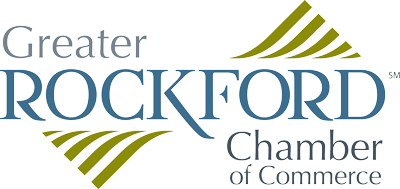Blueprints for change
Realtors, developers, and civic leaders discuss housing challenges in the region
By Christine Hand, managing editor
It’s no secret that the Rockford region is at a pivotal moment in housing and development. At a recent forum facilitated by the Region 1 Planning Council (R1), local realtors and developers discussed the needs and challenges shaping the area’s residential landscape. Business and civic leaders from Rockford and nearby municipalities also participated in the event, asking questions and sharing feedback.
Strategic vision
Michael Dunn, executive director of R1, set the stage by outlining the organization’s long-term approach. As a federally funded planning entity, R1’s mandate is to envision what northern Illinois will look like 30 years from now, and then work backward to address present-day needs in transportation, economic development, and—crucially—housing.
“Industry isn’t going to choose us as a growth area—whether they’re expanding or relocating—without a healthy housing market and a good living environment for their workforce,” Dunn said.
Growth and affordability
Connor Brown, CEO of the Northwest Illinois Alliance of REALTORS®, said the heated housing market isn’t limited to Rockford but extends throughout the broader region, citing some striking data: In Stephenson County, the average home cost in the first quarter of this year reached $167,000, up from $71,000 in 2021—a testament to both increased demand and rising home values.
However, this rapid appreciation brings challenges. Affordability and access to lending remain significant hurdles, especially for first-time buyers and those with moderate incomes.
Brown also noted the issue of high demand and low supply. “The only things making people move right now are life events. That’s it,” he said. “So, unless you’re dying, unless you can no longer live in your home, unless you’re getting divorced, unless you are relocating for a job, you’re not moving. And that has created quite the logjam.”
Housing needs
Ron Clewer, Illinois market president for Gorman & Company, underscored the importance of addressing the full spectrum of housing needs—from affordable and workforce housing to high-end market rate units. He clarified a common misconception: “Affordable housing simply means you’re not going to spend more than 30% of your income on housing and housing-related expenses… whether you’re making $12,000 a year or $300,000 a year.”
In Rockford, the area median income is about $63,000, and housing needs span from those earning well below that figure to those above it.
Clewer also pointed out that the stigma around affordable housing often stems from outdated models of public housing, which don’t reflect the diverse and modern approaches now being implemented.
Policies and initiatives
Clewer mentioned a recent study that found roughly 40% of the cost of multifamily construction is due to bureaucratic regulations and restrictions. “That includes state-level issues, IRS-level issues, local zoning codes, and county requirements,” he said.
But local governments in the Rockford region are taking steps to curb some of those costs. Brown cited several initiatives:
- Boone County’s moratorium on impact fees.
- The City of Rockford waiving permit, sewer, and water hookup fees.
- A three-year property tax rebate program, coordinated with local school districts and taxing bodies.
Other municipalities are reviewing zoning ordinances—such as setbacks, lot sizes, and allowable footprints—to reduce the upfront costs of new construction and make it more attractive for developers to build a variety of housing types.
Barriers to development
Despite these efforts, significant barriers remain. Oliver Emerson of Oliver Emerson Development, a local developer with deep ties to Rockford, described the challenges faced by small and minority developers, particularly the difficulty of securing upfront capital for pre-development costs like architectural fees. Grants and public support are essential, but delays in funding can stall projects and create uncertainty.
Emerson also highlighted the importance of community engagement and overcoming “not in my backyard” (NIMBY) attitudes. Successfully siting new developments often requires building trust and demonstrating the long-term value of projects to local residents. Timing is another critical factor, as market conditions and the availability of public incentives can shift rapidly.
Repurposing and revitalization
The panel also discussed the trend of repurposing historic and underutilized buildings in downtown Rockford. Emerson’s latest projects involve converting the Trekk building at 124 North Main into loft apartments and the old watch factory at 325 S. Madison St. into market-rate apartments, leveraging historic tax credits and working with federal agencies like HUD. These projects not only provide new housing but also contribute to downtown revitalization and the preservation of Rockford’s architectural heritage.
Time to act
The consensus among participants was clear: The region’s future growth depends on an immediate, coordinated, multi-faceted approach to housing and development.
“If we’re not building now, we’re going to miss it,” Brown said. “We have the land, the community will, and the opportunity. Now we just need to scale.”
The collaborative spirit between business, government, and organizations like R1 and the Greater Rockford Chamber of Commerce bodes well for the region’s ability to tackle the housing challenge.
